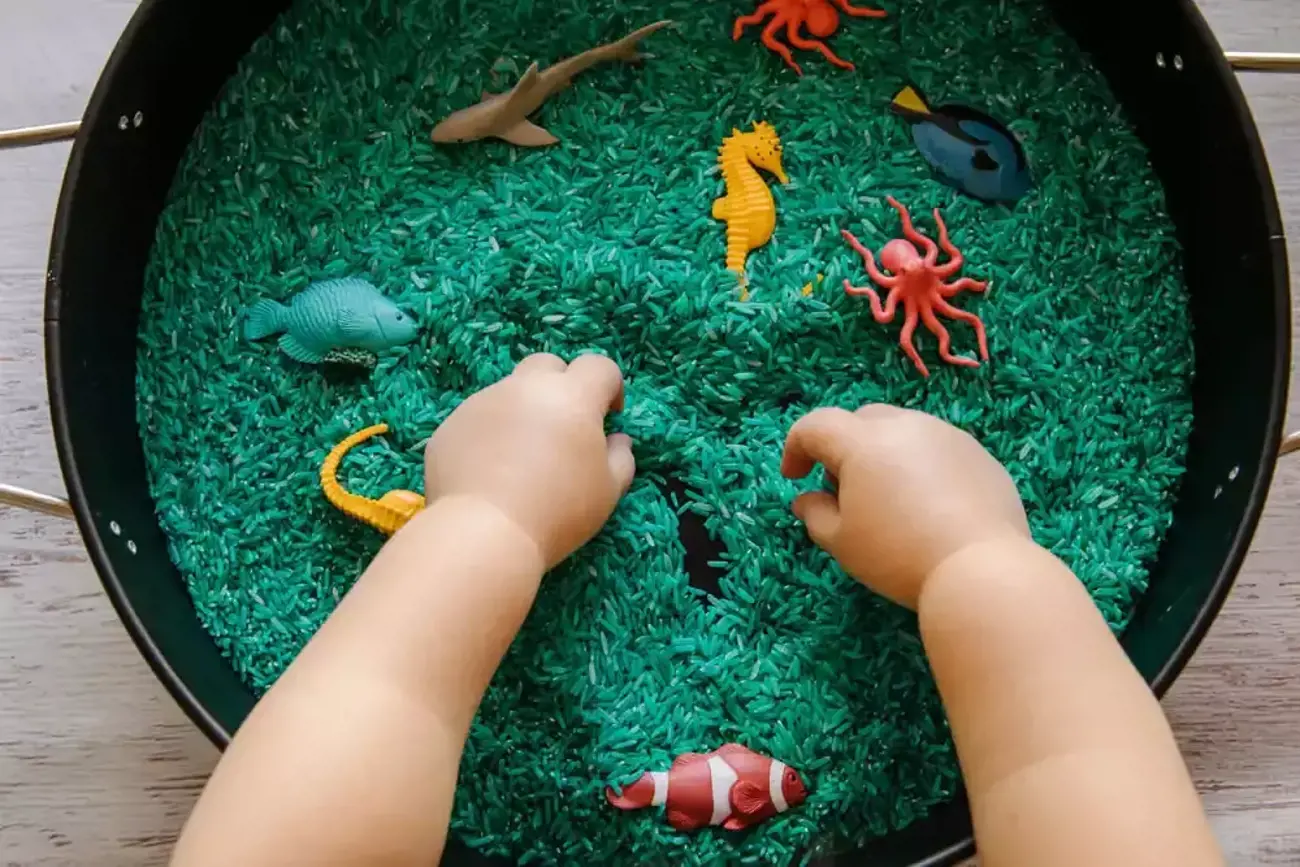Small children benefit greatly from sensory play, and there’s no need to buy expensive toys or wait for extracurricular activities to reap the rewards of touching, tasting, smelling, seeing and listening.
The family home stocks many ingredients suitable for sensory play, so let’s see how you can activate your child’s senses with the help of everyday materials.
What are the main benefits of sensory play?
Sensory play is any activity that stimulates the five senses. It’s beneficial for young children because their brain is developing at a rate of knots, and this kind of tactile, interactive play provides opportunities to create, explore, investigate and learn.
Sensory play:
- Helps to build fine and gross motor skills, e.g. when children sift through sensory bins or collect natural items for a scavenger hunt
- It supports language development, e.g. when families discuss different textures, colours, noises, tastes or smells
- It encourages problem-solving and scientific thinking, e.g. when children experiment with colour-mixing or work out how to fit a material in different sized containers
- It alters the way children think about sensory attributes, e.g. a child might be more open to trying a ‘mushy’ food if they’ve felt squishy textures at play time
- It helps to ease ‘big emotions’, e.g. calm down jars and lavender play dough can support children when they’re feeling tired, frustrated or anxious
- It provides hours of fun! Sensory play entertains under fives in engaging new ways, and there are activities to suit every season, environment and family
What household materials can be used for sensory play?
Bath chalk, scented textas and water beads are all great for sensory play, but when it comes to cupboard-ready materials, here are eight things most families have at hand:
- Water
H²O is one of the simplest and best ingredients for sensory play. You can freeze it, melt it, pour it, colour it and even add scents to it.
It’s easy to make a water sensory bin for toddlers and preschoolers, and there are some excellent ideas here.
- Pots, pans and wooden spoons
The family kitchen is full of homespun musical instruments. Young children can experiment with different sounds when tapping wood on metal or clanging lids, and if you have the space and time to make it, then how does a musical sensory wall sound?
- Flour
A pile of flour is an easy recipe for sensory play and it’s also a great substitute for sand. Young children can draw letters and numbers in a trayful of dry flour, make handprints in it, drive toy trucks through it, find small toys hidden in a bowl of it and add water to make a squishy paste or dough. You can use gluten-free flour if necessary, and be prepared for things to get messy!
- Pasta
Dry pasta can be mixed with small toys, plastic alphabet letters, pom poms, dried lentils/beans, pieces of dyed pasta and other goodies to make a sensory bin. Children can use fingers, tongs, scoops and measuring cups to sort through it, and cooked rainbow pasta is an eye-catching, finger-twiddling idea as well.
- Jelly
Jelly equals bright, squidgy fun. Under fives love mixing different colours together with jelly hands and jelly feet, pressing shapes in it with cookie cutters, and sniffing different flavours.
For a treasure hunt or fossil find, you can also set play trinkets or toy dinosaurs into jelly and have your child dig them out.
- Shaving cream
This whipped cream is not for eating, but it is perfect for sensory play (especially if you use a shaving cream made for sensitive skin). One idea is to squirt shaving cream on three different plates and add a different colour of food colouring to each. Children then draw in the cream with a paintbrush and mix the colours together.
- LEGO or Duplo
Most families have a sizeable collection of little plastic blocks and these bricks can be swished about in a sink full of water or used to make water dams. The colourful, studded bricks look and feel interesting, and LEGO/Duplo is a classic way to build fine motor skills.
- Slime and play dough
Slime and play dough are superstars in the sensory world and both can be made at home. The internet is oozing with recipes and here are a few that really appeal to the senses:
- Mermaid slime with glitter, sequins and shells for an ocean feel
- Edible marshmallow slime for a sweet taste
- Natural cinnamon play dough for a great smell
- Rainbow fluffy slime with bright colours
- Silky and stretchy play dough for a beautifully soft touch
Sensory play is enriching, engaging and hugely enjoyable for under fives, so raid the cupboards and get set for a little mess and a lot of benefits. Enjoy!
Additional reference

































